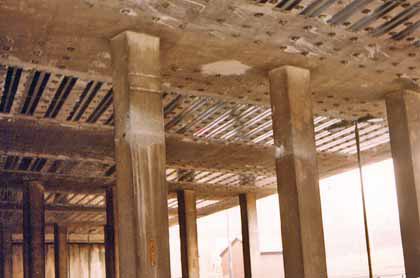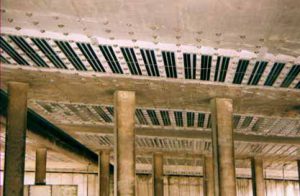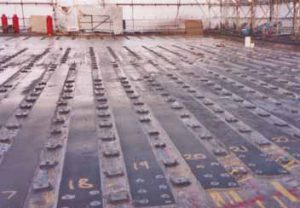Plate bonding is a well established process used to strengthen bridges and other structures
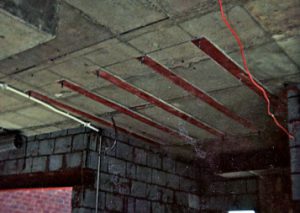 Originally using steel plates applied to plane concrete surfaces using epoxy resin adhesive and bolted fixings, the plate bonding technique is used to provide additional resistance to bending, improve load capacity or reduce deflections. Plate bonding is particularly useful as a retrospective method when changes in use in a building, or perhaps increased vehicle loadings on a bridge structure need to be addressed.
Originally using steel plates applied to plane concrete surfaces using epoxy resin adhesive and bolted fixings, the plate bonding technique is used to provide additional resistance to bending, improve load capacity or reduce deflections. Plate bonding is particularly useful as a retrospective method when changes in use in a building, or perhaps increased vehicle loadings on a bridge structure need to be addressed.
Recent developments in material technology have seen the introduction of carbon fibre plates, which are significantly lighter and easier to install than steel plates of similar capacity.
Carbon fibre fabric is now also used to strengthen columns and beams using a wrapping technique. Single or multiple layers of uni or bi-directional fabric are impregnated with resin adhesive and applied to sections such as beams and columns to improve strength. The technique is used particularly to improve bursting or impact resistance for columns on highway bridge structures.
Plate Bonding Information…
Ram Services first became involved with the strengthening of structures using steel plate bonding method in 1984 for the M1 Brinsworth Road Bridge near Sheffield. Initial involvement was requested by South Yorkshire County Council initially during the design of strengthening process, and later to assist with supervision of work on site, when the company also supplied the epoxy adhesive. The work featured in Construction News in January 1984.
In late 1985, Ram Services Limited was approached by Derbyshire County Council to discuss and carry out feasibility trials for “Injected Plate Bonding” where the preparation and positioning of the plates is undertaken ahead of the injection of the liquid epoxy adhesive.
After trials a suitable viscosity of the epoxy was attained and the project on the Stainsby-Teveral bridge below the M1 close to J29 was completed with minimal traffic disruption on the motorway above.
Following on from the above, a relationship developed with engineers at Kent CC who had already commissioned a number of bridge strengthening schemes utilising plate bonding. In early 1988 the possibility of using injected plate bonding at the A2015 Bainbridge Bridge was considered, where additional plates needed to be applied to existing fabricated and riveted steel beam flanges. It quickly became apparent that there were a number of advantages to using resin bonded plates compared to welding, and Ram Services completed the strengthening with resin bonded plates in November 1988. This scheme featured in New Civil Engineer in March 1989.
Since 1988 Ram Services strengthened three trunk road bridges for the Scottish Development Department, in 1999 completed what is believed to be the first and largest bridge strengthening scheme using carbon fibre plates for the UK Highways Agency (A34/M60 Barnes Bridge outside Manchester), and has undertaken other works in Lancashire, Leicestershire, Greater Manchester and elsewhere.
Plate bonding is equally suitable for strengthening other structure types, and Ram Services have also completed a range of such schemes, including an office building on Cardiff, a school in North Wales, a library building in Stoke on Trent for Staffordshire County Council, an underground pumping station in Manchester, and to minor culverts and stream crossings in Anglesey, Cumbria and North Yorkshire.
PLATE BONDING CASE HISTORIES…
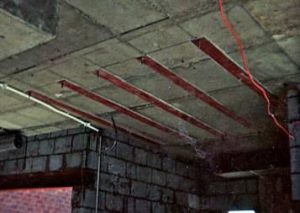
Plate Bonding Historical
Read More

Plate Bonding: Bridge Strengthening, Anglesey
Read More

